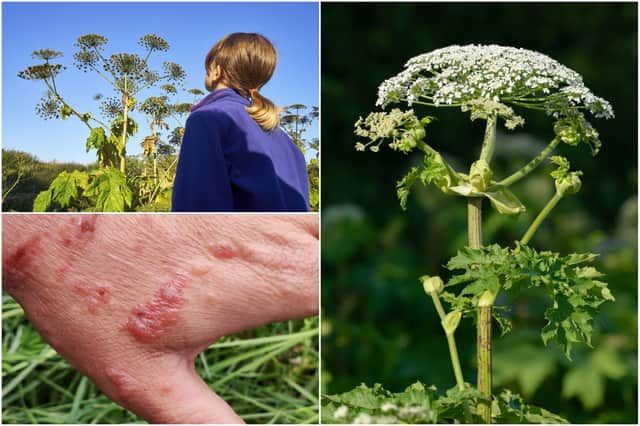Parents urged to show kids photos of dangerous giant hogweed plant that causes severe burns


This article contains affiliate links. We may earn a small commission on items purchased through this article, but that does not affect our editorial judgement.
Parents are being urged to show children photos of the toxic giant hogweed plant which can cause severe burns.
If you’re spending more time gardening or going for long walks as lockdown eases, you could stumble across the plant that is much more dangerous than you might first realise.
Advertisement
Hide AdAdvertisement
Hide AdMini First Aid High Peak and Tameside has issued a warning about the plant: "Now is the season for 'Britain's most dangerous plant' and with the lovely weather forecast in a couple of weeks time, this stuff will thrive and spread."
In a Facebook post, they said: "All parents, please warn your children not to touch the plant as the leaves, stems, roots, flowers and seeds all contain this terrible poisonous toxin.
"Any parts of the body that come into contact with the sap of a giant hogweed should be immediately washed with soap and cold water and seek medical advice. Further exposure to sunlight should be avoided for at least 48 hours."
Here is everything you need to know about Giant Hogweed, from what it looks like to why it’s dangerous - and what to do if you touch the toxic sap.
Advertisement
Hide AdAdvertisement
Hide AdWhat is Giant Hogweed and is it dangerous?
Giant Hogweed, also known by its Latin name Heracleum Mantegazzianum, originated in Southern Russia and Georgia.
The plant is part of the Apiaceae family, which includes well known vegetables and herbs like parsley, carrot, parsnip and coriander.
Giant Hogweed was introduced to Britain and Europe in the 19th century, from the Caucasus Mountains. The earliest documented reference to the plant has been traced back to the Royal Botanic Gardens Kew Seed List of 1817, where seeds of the plant were listed.